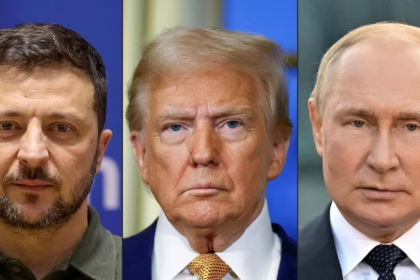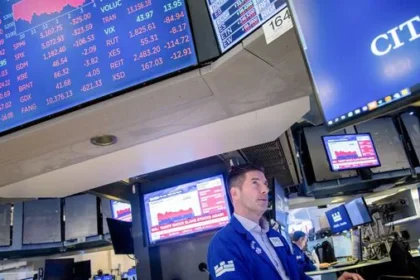India Eyes Retaliation After US Rejects WTO Notice Amid Trade Dispute
India Considers Retaliation After US Rejects WTO Notice on Tariffs
India is weighing retaliatory trade measures after the United States rejected its May 9 notice at the World Trade Organization (WTO), which proposed suspension of concessions on American goods in response to steep import tariffs on steel and aluminium. The US maintains that its tariff hike is not a safeguard measure, thereby rejecting India’s right to retaliate under WTO rules.
The escalating dispute comes in the backdrop of the US doubling tariffs on metal imports to 50% effective June 4, citing national security. The decision, taken under Section 232 of the Trade Expansion Act of 1962, has sparked widespread concern over its impact on global trade dynamics and bilateral ties between New Delhi and Washington.
According to people familiar with the matter, India is now considering a proportionate response, including suspending existing trade concessions and imposing additional duties on key US exports, such as almonds, walnuts, and metals. The proposed retaliatory move follows the US administration’s refusal to engage in WTO consultations, arguing that the duties are not safeguard measures and therefore do not warrant the response India has proposed.
The crux of the disagreement lies in the US’s stance that its tariffs are based on national security grounds, not on economic protectionism. On this basis, the US has informed the WTO that it will not negotiate with India under the provisions of the Agreement on Safeguards. “The United States will not discuss the Section 232 tariffs under the Agreement on Safeguards as we do not view the tariffs as a safeguard measure,” the US said in its official communication to the multilateral trade body.
India, however, maintains that the US measures amount to a de facto safeguard action, affecting $7.6 billion worth of Indian metal exports. According to India’s May 9 WTO notification, the retaliatory suspension of concessions would equate to approximately $1.91 billion in duties on US-origin goods. The suspension of concessions is scheduled to take effect from June 8, 30 days after the notice was filed.
The Indian Ministry of Commerce has not officially commented on the issue. However, sources indicate that unless Washington offers preferential treatment for Indian metal exports as part of ongoing negotiations for a Bilateral Trade Agreement (BTA), retaliation could be imminent. A US trade delegation is expected in India this week to resume discussions, which both sides hope will lead to an early harvest deal.
Trade experts emphasize the economic significance of the US metal tariffs for India. Ajay Srivastava, founder of the Global Trade Research Initiative (GTRI) and a former Indian Trade Service officer, noted that India exported $4.56 billion worth of steel and aluminium products to the US in FY25. This includes $587.5 million in iron and steel, $3.1 billion in articles of iron or steel, and $860 million in aluminium and related articles.
“With Trump now doubling the tariffs, it remains to be seen whether India will carry out the retaliation by increasing tariffs on specific US exports within a month,” Srivastava said. He added that India’s action is grounded in WTO rules, and the government has already issued a formal notice indicating its intention to act.
This is not the first time India and the US have clashed over metal tariffs. In 2018, under the Biden administration, the US imposed a 25% tariff on select steel imports and a 10% duty on aluminium products, citing national security. India responded in 2019 by levying additional duties on 28 US products, including almonds and walnuts, and initiated a dispute settlement process at the WTO.
In June 2023, the two sides reached a mutually agreed solution (MAS), under which the US agreed to provide market access to certain Indian metal products via an exclusion process under Section 232. In exchange, India withdrew its retaliatory tariffs on American goods. MAS allows WTO members to resolve trade disputes amicably without resorting to prolonged litigation.
The current standoff, however, threatens to undo that progress. With no appellate body currently functional at the WTO due to US opposition to appointing new judges, experts warn that legal recourse is limited. “Such disputes at WTO are common and routine. Without an effective appellate body at the multilateral forum, disputes have no real significance,” said one person close to the developments.
A second source familiar with the matter described the current impasse as “vexed,” given its economic and diplomatic ramifications. “India’s exports are now exposed to sharply higher US tariffs, threatening the profitability of Indian producers and exporters,” the source said.
Meanwhile, the broader implications of the dispute extend beyond just bilateral ties. If India proceeds with retaliatory tariffs, it could affect global perceptions of trade reliability and stability, particularly in the metals sector. The outcome of the upcoming trade discussions between the two countries will be crucial in determining the next steps.
In conclusion, while India has signaled its willingness to retaliate against the US for what it views as unjustified trade restrictions, the path forward remains uncertain. Much will depend on whether both nations can reach a negotiated settlement through the BTA framework or risk a full-blown trade confrontation at a time of already heightened global economic fragility.
Also Read : India-Pakistan Generals Exchange Sharp Warnings at Shangri-La Dialogue Amid Rising Tensions








